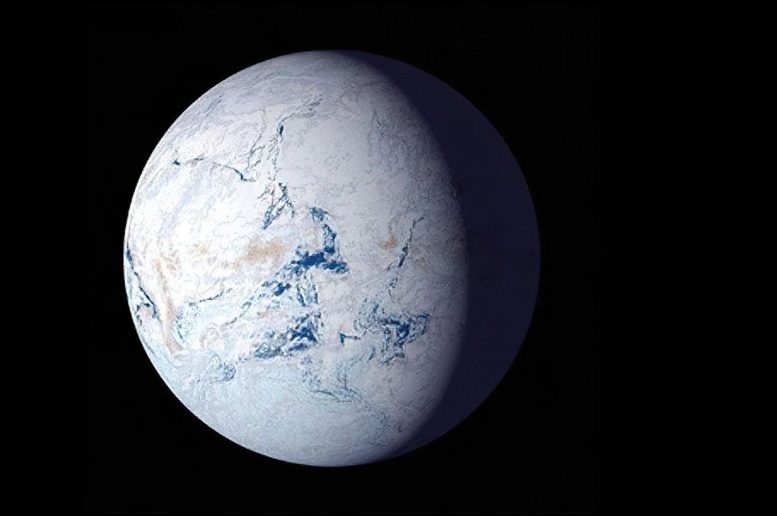
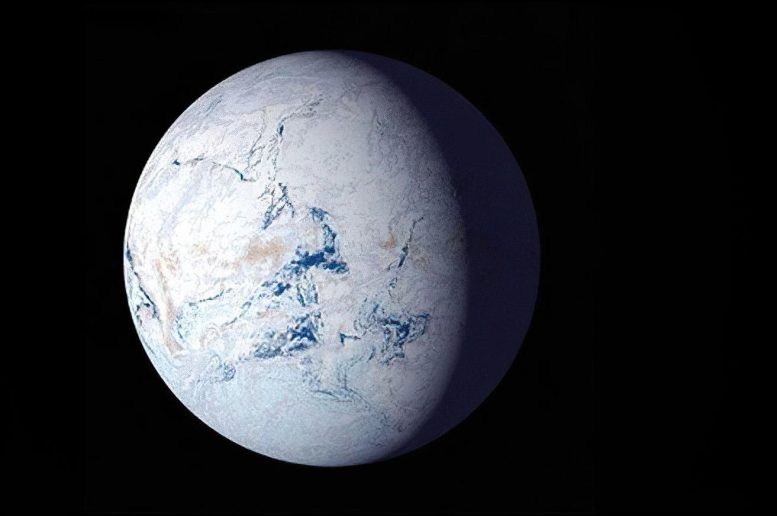
Australian geologists have identified low volcanic CO2 emissions and rock weathering in Canada as key factors behind an extreme ice age 700 million years ago. Their research, informed by plate tectonic modeling and geological evidence from South Australia, sheds light on Earth’s climate sensitivity and its natural thermostat mechanisms, contrasting the slow pace of geological climate change with the rapid changes driven by human activities. Credit: NASA
Volcanic carbon emissions reached an all-time low, triggering a global ice age that lasted for 57 million years.
Australian geologists employed plate tectonic modeling to identify the most likely causes of an extreme ice-age climate on Earth, occurring over 700 million years ago.
The study, published in Geology, helps our understanding of the functioning of the Earth’s built-in thermostat that prevents the Earth from getting stuck in overheating mode. It also shows how sensitive global climate is to atmospheric carbon concentration.
“Imagine the Earth almost completely frozen over,” said the study’s lead author, ARC Future Fellow Dr Adriana Dutkiewicz. “That’s just what happened about 700 million years ago; the planet was blanketed in ice from poles to the equator and temperatures plunged. However, just what caused this has been an open question.
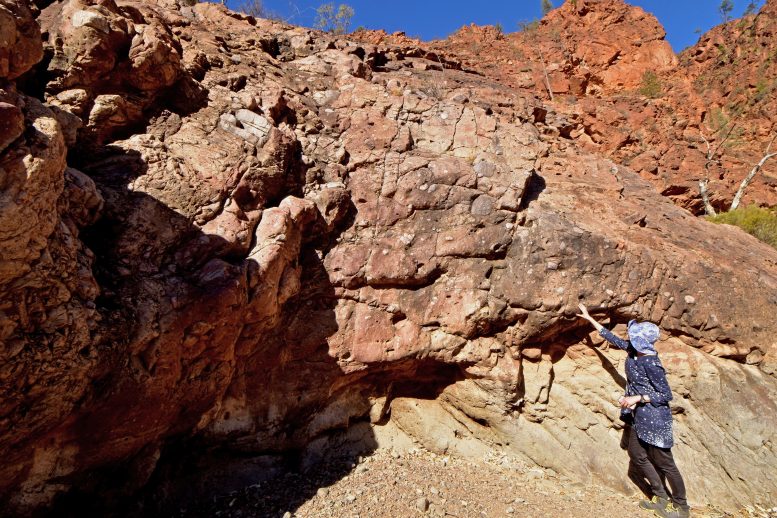
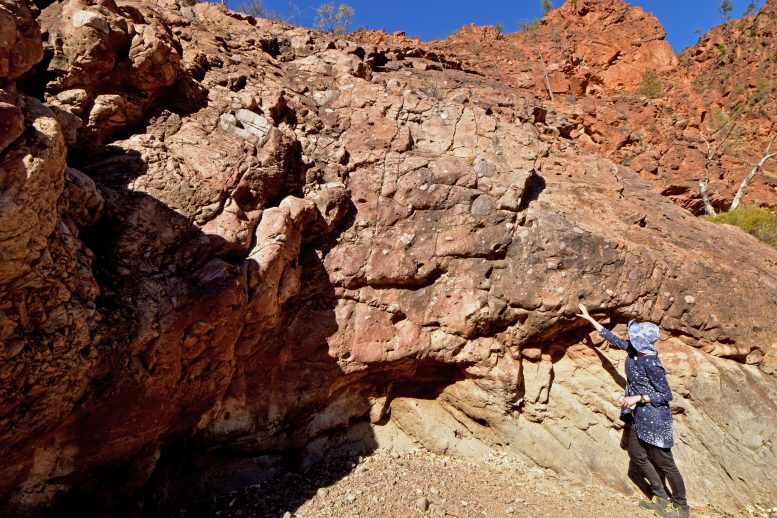
Sturt Formation glacial deposits from the Sturtian Glaciation circa 717–664 million years ago in the northern Flinders Ranges, Australia, close to the Arkaroola Wilderness Sanctuary. Research lead author Dr Adriana Dutkiewicz from the School of Geosciences, the University of Sydney, pointing to a thick bed of glacial deposits. Credit: Professor Dietmar Müller/University of Sydney
“We now think we have cracked the mystery: historically low volcanic carbon dioxide emissions, aided by weathering of a large pile of volcanic rocks in what is now Canada; a process that absorbs atmospheric carbon dioxide.”
Geological Insights from the Flinders Ranges
The project was inspired by the glacial debris left by the ancient glaciation from this period that can be spectacularly observed in the Flinders Ranges in South Australia.
A recent geological field trip to the Ranges, led by co-author Professor Alan Collins from the University of Adelaide, prompted the team to use the University of Sydney EarthByte computer models to investigate the cause and the exceptionally long duration of this ice age.
Between 717 and 660 million years ago, the Earth was covered in snow and ice – a 57 million-year ice age. University of Sydney geoscientists, led by Dr Adriana Dutkiewicz and Prof Dietmar Müller, have found the likely cause: all-time low levels of volcanic carbon dioxide in the atmosphere. This video shows motions of continents (grey) and plate boundaries (orange) from 850 to 540 million years ago. (Snowflakes appear during the ‘Snowball Earth’ periods.) Credit: Ben Mather and Dietmar Müller/The University of Sydney
Sturtian Glaciation and Plate Tectonics
The extended ice age, also called the Sturtian glaciation after the 19th-century European colonial explorer of central Australia, Charles Sturt, stretched from 717 to 660 million years ago, a period well before the dinosaurs and complex plant life on land existed.
Dr Dutkiewicz said: “Various causes have been proposed for the trigger and the end of this extreme ice age, but the most mysterious aspect is why it lasted for 57 million years – a time span hard for us humans to imagine.”
The team went back to a plate tectonic model that shows the evolution of continents and ocean basins at a time after the breakup of the ancient supercontinent Rodina. They connected it to a computer model that calculates CO2 degassing of underwater volcanoes along mid-ocean ridges – the sites where plates diverge and new ocean crust is born.
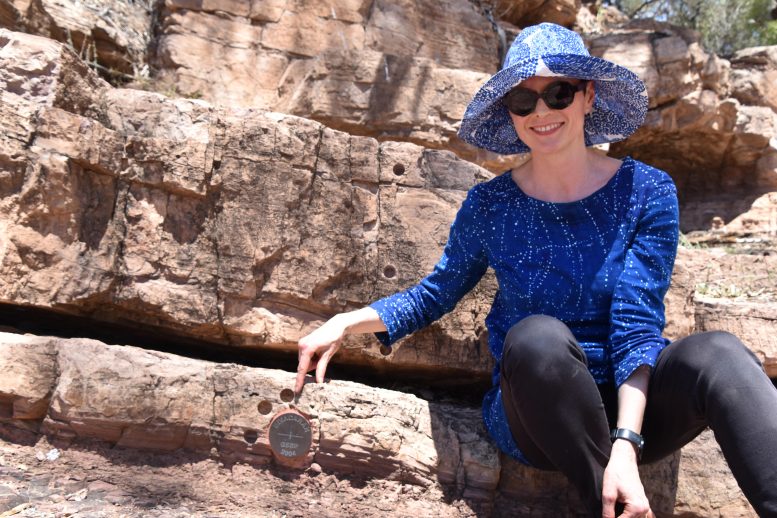
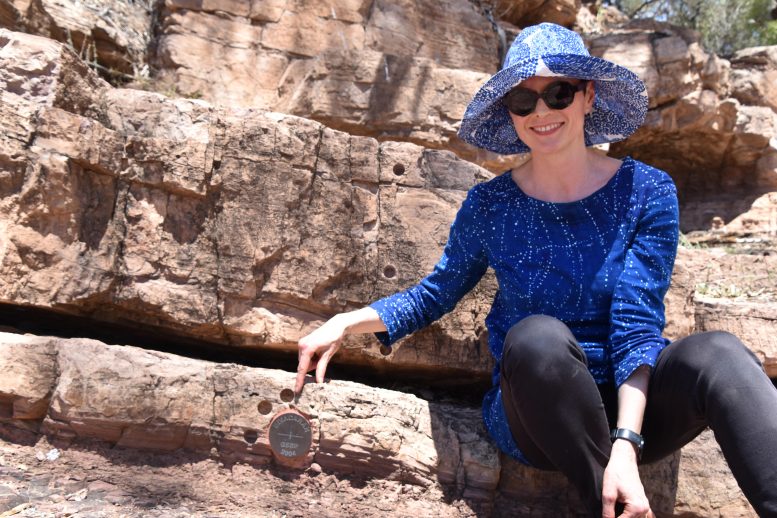
Dr Adriana Dutkiewicz from the School of Geosciences at the University of Sydney in the Flinders Ranges, South Australia. Credit: The University of Sydney
The Role of CO2 and Geological Climate Change
They soon realized that the start of the Sturtian ice age precisely correlates with an all-time low in volcanic CO2 emissions. In addition, the CO2 outflux remained relatively low for the entire duration of the ice age.
Dr Dutkiewicz said: “At this time, there were no multicellular animals or land plants on Earth. The greenhouse gas concentration of the atmosphere was almost entirely dictated by CO2 outgassing from volcanoes and by silicate rock weathering processes, which consume CO2.”
Co-author Professor Dietmar Müller from the University of Sydney said: “Geology ruled climate at this time. We think the Sturtian ice age kicked in due to a double whammy: a plate tectonic reorganisation brought volcanic degassing to a minimum, while simultaneously a continental volcanic province in Canada started eroding away, consuming atmospheric CO2.
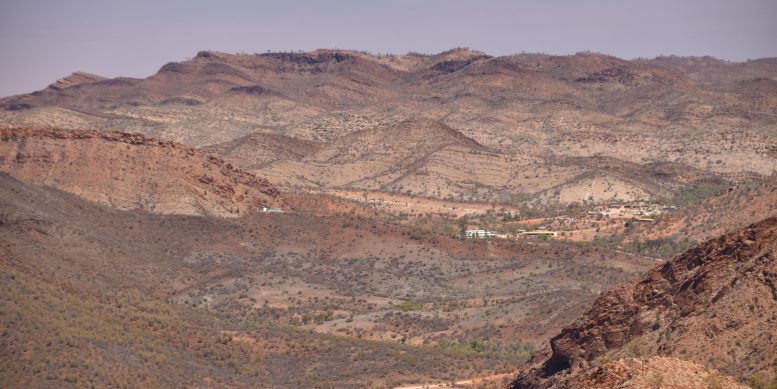
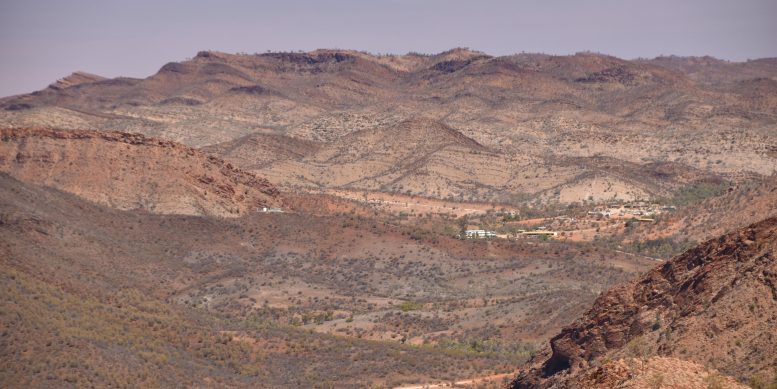
View towards the Arkaroola Wilderness Sanctuary, Flinders Ranges, with the Sturt Formation glacial deposits from the Sturtian Glaciation circa 717–664 million years ago forming a prominent ridge in the middle of the photo on the left. Credit: Professor Dietmar Müller/University of Sydney
“The result was that atmospheric CO2 fell to a level where glaciation kicks in – which we estimate to be below 200 parts per million, less than half today’s level.”
The team’s work raises intriguing questions about Earth’s long-term future. A recent theory proposed that over the next 250 million years, Earth would evolve towards Pangea Ultima, a supercontinent so hot that mammals might become extinct.
However, the Earth is also currently on a trajectory of lower volcanic CO2 emissions, as continental collisions increase and the plates slow down. So, perhaps Pangea Ultima will turn into a snowball again.
Dr Dutkiewicz said: “Whatever the future holds, it is important to note that geological climate change, of the type studied here, happens extremely slowly. According to NASA, human-induced climate change is happening at a pace 10 times faster than we have seen before.”
Reference: “Duration of Sturtian “Snowball Earth” glaciation linked to exceptionally low mid-ocean ridge outgassing” by Adriana Dutkiewicz, Andrew S. Merdith, Alan S. Collins, Ben Mather, Lauren Ilano, Sabin Zahirovic and R. Dietmar Müller
The study was funded by the Australian Research Council.
